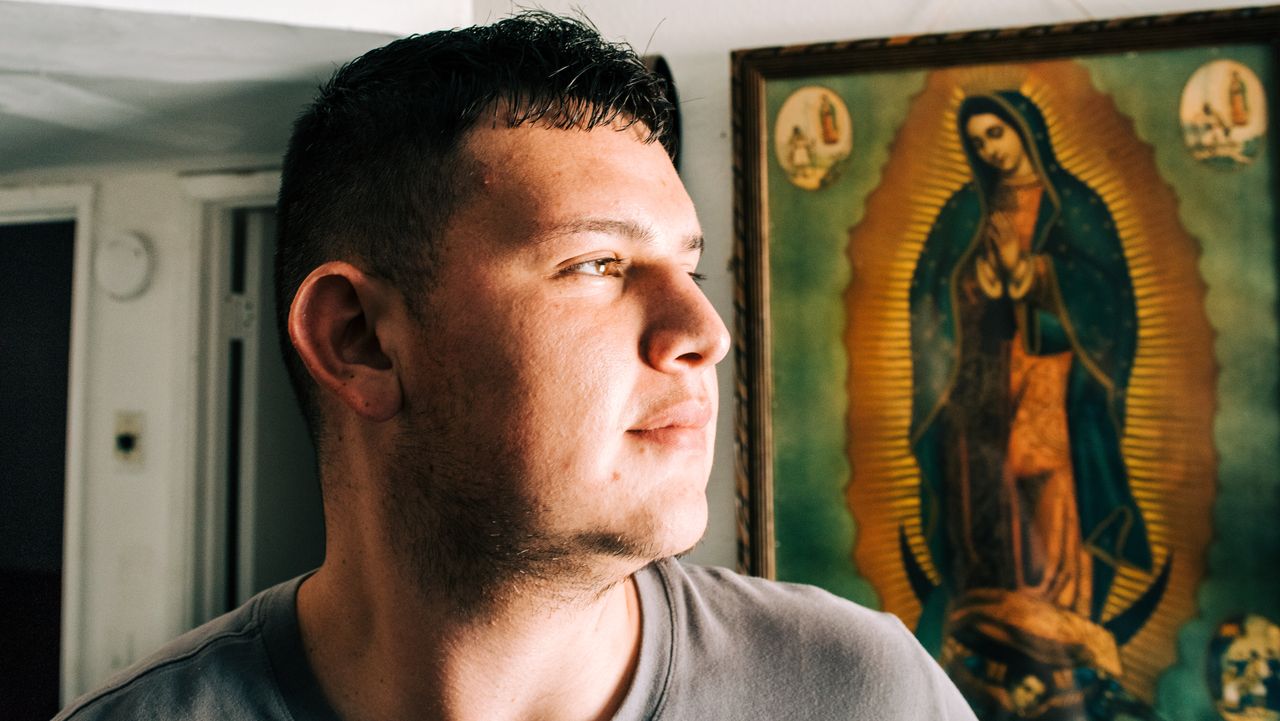NOGALES, Ariz. ― U.S. Customs and Border Protection won’t say much about how one of its officers came to shoot Angel Mendivil Perez, a 21-year-old American, in the head at the Dennis DeConcini border crossing here earlier this year.
The port of entry, which straddles a multilane road in downtown Nogales, is a busy one. On a typical day, vehicles are lined up, filled with people who cross the border to work, eat, shop or visit family. Pedestrians use a walkway near the road, sometimes waiting for hours to present identification to enter the United States. Southbound travelers usually sail through. It’s not general practice for CBP to stop drivers of vehicles leaving the U.S. for Mexico unless they have a reason or they’re doing random checks.
Around 7 p.m. on Feb. 7, Mendivil Perez tried to exit the U.S. in a pickup truck with a license plate registered to a different vehicle, according to a brief statement CBP released that month.
When Mendivil Perez, who was with a male passenger, got to the crossing, CBP officers approached the truck and questioned him. During questioning, Mendivil Perez accelerated toward Mexico, according to CBP’s statement. At this time, a CBP officer fired his gun. The officer and Mendivil Perez’s passenger were uninjured. Mendivil Perez was shot. The truck crashed into a cement barrier a few yards into Mexico.
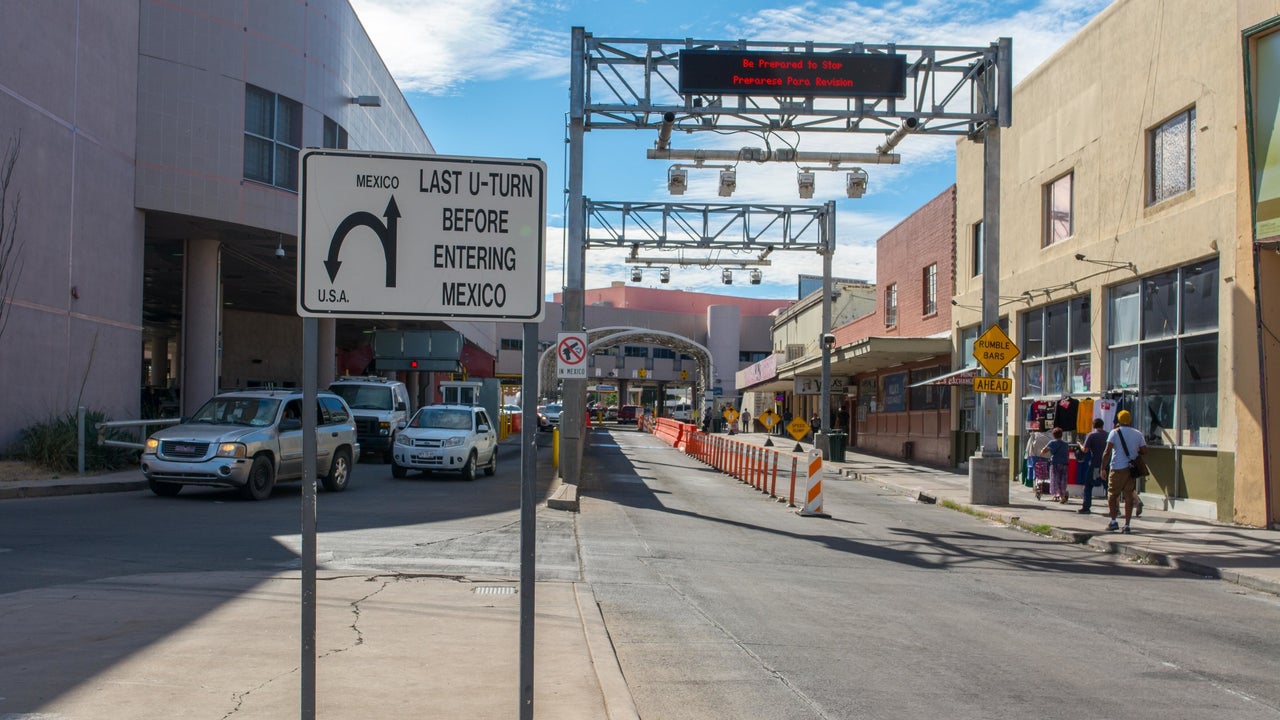
Mendivil Perez, in such critical condition that the mayor here initially told local news he was dead, was taken to a hospital in Mexico, moved across the border, and eventually airlifted to Banner - University Medical Center Tucson in Arizona. He survived.
More than six months later, CBP, citing the ongoing investigation, won’t name the officer who fired his gun, explain why he fired, or explicitly acknowledge that a bullet from the officer’s gun struck Mendivil Perez. The agency has not claimed Mendivil Perez or his passenger were armed — Mendivil Perez’s attorney, Bill Risner, said it’s clear Mendivil Perez and his passenger were unarmed; a CBP official wouldn’t comment — nor will the agency explain why an officer would have fired if the vehicle’s occupants were unarmed.
The mayor, who did respond to a request for comment, claimed he was told — it was unclear by whom — that Mendivil Perez attempted to run over an officer. CBP won’t say whether the truck was moving toward an officer or anyone else. And it won’t say whether it believes the officer’s decision to fire was justifiable.
“Why did this happen? What was the reason why they even shot at him in the first place?”
- Eleonora Mendivil, sister of Angel Mendivil Perez
Things take a while “because we want to get it right,” said a CBP official who was granted anonymity because that was the only condition under which CBP would agree to a phone interview on this matter. The general investigation process includes interviewing people and looking at physical evidence, along with a review by other law enforcement entities to see whether there is a case for criminal charges. There is also a review of the agency’s policy. During that time, “we try to keep everything as evidence — and when you have evidence, you don’t want to make that public,” the official added.
Six months on, Mendivil Perez has not been charged with a crime related to the incident, according to his attorney. Mendivil Perez’s passenger, whom HuffPost has not been able to locate, was released at the scene by Mexican authorities. No federal charges were filed against either of them as of Aug. 13, a spokesman for the U.S. Attorney’s Office for the District of Arizona said in an email.
Louis Fidel, an attorney in Tucson who represents the officer who fired his weapon, declined to answer specific questions about the circumstances of the shooting. “There was an imminent serious threat of physical injury that was the basis of the decision to shoot,” he said.
Mendivil Perez also doesn’t have much to offer about what happened. The last thing he remembers, he said, is shopping for groceries to bring to his pregnant girlfriend, who lives in Mexico. He woke up after that in the hospital with a gunshot wound to the left side of his head, a fractured skull, and ballistic fragments remaining in his brain.
Mendivil Perez’s mother, Nora Perez, and his 29-year-old sister, Eleonora Mendivil, also said they still don’t know much about what happened. The night of the shooting, they rushed to meet Mendivil Perez at the hospital in Mexico where he was first taken. His sister was “screaming, yelling, crying,” she said, initially only knowing that her little brother had been shot in the head.
“There’s still that why. The por qué. Why did this happen? What was the reason why they even shot at him in the first place?” Mendivil said.
“It’s like why, why, why, why.”
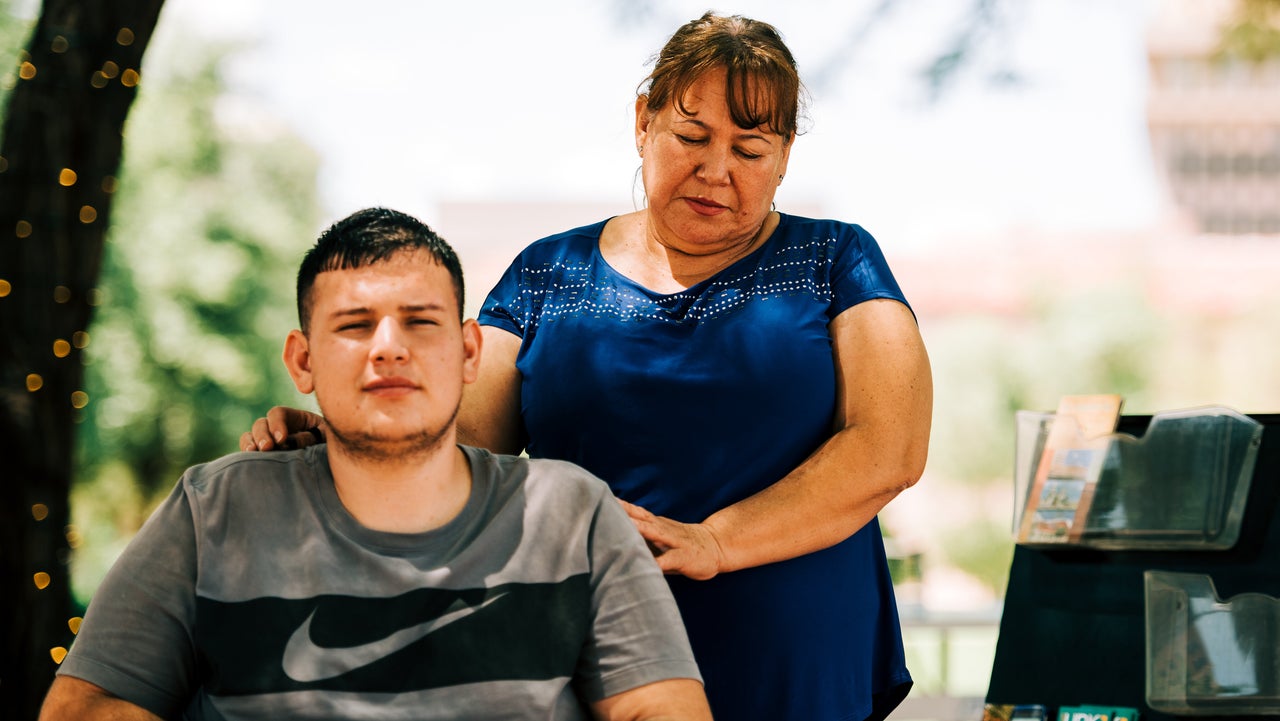
Shooting at a moving vehicle whose occupants are unarmed is usually a bad idea, many policing experts say. A growing number of law enforcement agencies have banned their officers from doing so. For years — following cases that include a plainclothes Border Patrol agent shooting a San Diego mother of five in her car in 2012, killing her — experts and advocates have urged CBP to join the trend. But the agency still does not fully prohibit the practice.
The logic behind the bans is simple: It is difficult to shoot a moving car accurately, and injuring or killing the driver isn’t likely to disable or stop the threat of the car. If a suspect is fleeing in a vehicle, shooting them may make the situation more dangerous. With an incapacitated driver, a car becomes an unguided missile that can careen into officers and innocent bystanders.
“You could get that vehicle or you could get that individual another day, but you can’t get that life back,” said Chuck Wexler, the executive director of the Police Executive Research Forum (PERF), a police research and policy organization.
There are rare exceptions. Some city police departments, for example, have recently started allowing officers to shoot at cars used in vehicle-ramming terrorist attacks. But generally, in cases where a suspect is in an oncoming car, getting out of the way is a safer option than shooting the driver.
Most of the time, the officer can move away, said Geoffrey Alpert, a professor at the University of South Carolina who has been conducting research on high-risk police activities for more than 30 years. In most scenarios, he added, drivers are trying to escape — not intentionally run over officers.
This idea also isn’t new. In 1972, there were almost 1,000 total New York City Police Department officer shooting incidents. That year, the agency adopted a new policy prohibiting officers from shooting at a moving vehicle unless a person in the vehicle was using or threatening deadly force by means other than the vehicle itself. That and other reforms resulted in a sharp reduction in the number of shooting incidents involving NYPD officers the following year, according to a report by PERF. That trend has continued, PERF wrote, with no negative effect on officer safety.
Not all police departments have the same policy — and some police advocates have stopped short of supporting a complete ban on firing at moving vehicles. Officers who do it aren’t necessarily going to be charged with wrongdoing: In the U.S., law enforcement officers can legally use deadly force whenever they reasonably believe a person poses a deadly threat. This has translated into broad legal protection for cops — including when they shoot unarmed people, disproportionately people of color. Police have killed nearly 200 people who were in vehicles when they were shot since 2015, many of whom police said were “armed” only with the vehicle, according to a 2017 article in The Washington Post.
Nonetheless, for decades, the trend in police departments has been to move toward more restrictions or total bans on shooting at unarmed people in moving cars. Many major city police departments have followed the NYPD’s lead, and officials in the Obama administration’s Justice Department have promoted the policy of banning this practice.
“You could get that vehicle or you could get that individual another day, but you can’t get that life back.”
- Chuck Wexler, executive director of the Police Executive Research Forum
CBP, which has more expansive powers than other law enforcement entities, has claimed that it faces unique circumstances. It has also resisted adopting other best practices promoted by policing experts.
The agency has tested but not yet adopted the use of body cameras like modern city police departments. In the past, Border Patrol agents have shot at people allegedly throwing rocks, a practice condemned by international human rights advocates because thrown rocks don’t usually present a serious threat. And CBP is out of step with a number of other police agencies on the issue of car chases, a sweeping investigation by ProPublica and the Los Angeles Times found earlier this year.
Years ago, advocates and experts urged CBP to adopt guidelines that more strictly limit officers’ ability to shoot at unarmed people in moving cars, as part of the larger reform efforts started under President Barack Obama’s administration.

Under Obama, CBP asked for a review of its officers’ and agents’ use of force, which covered January 2010 through October 2012. The resulting review, conducted by PERF and dated February 2013, identified this issue as one that needed “significant change.” Looking at 15 cases in which CBP agents fired at vehicles, PERF found that the agency appeared to allow officers to shoot at the driver of “any suspect vehicle” that came “in the direction of agents.” In many cases, agents were suspected to have moved into the exit path of a fleeing car on purpose, PERF wrote. Additionally, some agents on foot appeared to shoot at fleeing cars “out of frustration.”
PERF recommended that CBP change its training and its policy to reflect the policies that “have proven effective in a number of large U.S. jurisdictions for over 40 years.” In May 2014, CBP announced it was revamping training and released a revised policy handbook that incorporated “law enforcement best practices,” according to the agency.
But the handbook didn’t exactly mirror PERF’s recommendation to avoid shooting at moving cars unless there’s a deadly use of force other than a moving vehicle. Instead, the new version carved out exemptions for circumstances in which the car itself is the only serious threat and noted that the hazard of an uncontrolled vehicle should be taken “into consideration.”
Gil Kerlikowske, who served as commissioner of CBP from March 2014 to January 2017, told HuffPost that CBP didn’t adopt PERF’s recommended language because the CBP agents face different environmental conditions than city police officers. He cited a case in San Diego in which an agent fired at a vehicle on a “one-lane dirt road — so on the one side is a rock wall, on the other side is a 30- to 40-foot drop.” He added, “that land doesn’t always lend itself to being able to get out of the way, so we left that option open to the Border Patrol.” (Alpert, the professor, said city police officers also face situations where they can’t get out of the way because of the environment.)
“There was enough of an environmental and operational change to not institute a blanket prohibition,” a CBP official confirmed. The agency would never want to cause officers or agents to make a “split-second decision involving their life or the life of another person due to a blanket prohibition in the policy,” the official added.
“Looking at 15 cases in which CBP agents fired at vehicles, PERF found that the agency appeared to allow officers to shoot at the driver of 'any suspect vehicle' that came 'in the direction of agents.'”
In June 2015, a second group of law enforcement professionals, the Homeland Security Advisory Council’s CBP Integrity Advisory Panel, co-chaired by then-New York City Police Commissioner Bill Bratton, reviewed the handbook and still recommended CBP consider placing specific restrictions on firing at moving vehicles.
CBP viewed this as a “blanket prohibition” as well, and instead opted to emphasize training, the CBP official said. As part of the agency’s umbrella training on safe tactics, officers are specifically told they shouldn’t use their bodies to physically block a vehicle’s path.
The agency has made some progress on the reforms started under Obama. CBP’s use-of-force incidents involving firearms have been down “pretty markedly over the years,” Kerlikowske noted. This is reflected in CBP data, which only recorded 15 use-of-force incidents involving firearms in FY2018, compared to 55 in FY2012. Under Obama, focusing on the vehicle issue wasn’t as critical as looking at the use of deadly force overall, the agency’s policy and its antiquated training, Kerlikowske argued. “The vehicle issue with the Border Patrol was never quite as significant as it is in a city police department,” he added.
When asked whether CBP believed it followed the best practices promoted by other police departments, a CBP official replied: “I would say that we are in line with the intent of most other policies, although we probably do not follow their policies verbatim.”
But some civil rights advocates say CBP’s policy doesn’t go far enough. The American Civil Liberties Union has seen multiple cases since 2014 that suggest CBP’s lower standard on shooting at vehicles appears to have “led to lethal force incidents by CBP personnel that would be prohibited under prevailing standards,” said Chris Rickerd, a senior policy counsel at the ACLU.
HuffPost identified several other recent cases where CBP officers appeared to shoot at moving cars. In February 2015, for example, a Border Patrol agent running toward a Ford Explorer saw the car “moving towards him” and attempted to move out of the way, according to a probable cause statement in a complaint filed by the U.S. government. The agent then fired to “stop the vehicle from running him over,” according to the government, and the car “narrowly missed” him and fled. In another case on March 14, 2016, CBP officers fired after a driver “failed to comply with verbal commands to stop the vehicle,” according to the brief CBP statement. (A CBP official declined to comment on these cases, citing ongoing investigations.)
The ACLU urges CBP leadership to end its “unjustified exceptionalism” and to change the policy to adopt the recommendations from PERF and the Homeland Security Advisory Council’s CBP Integrity Advisory Panel, Rickerd said.
Speaking of the current policy, he added, “we are deeply saddened by the unnecessary suffering that it has caused.”
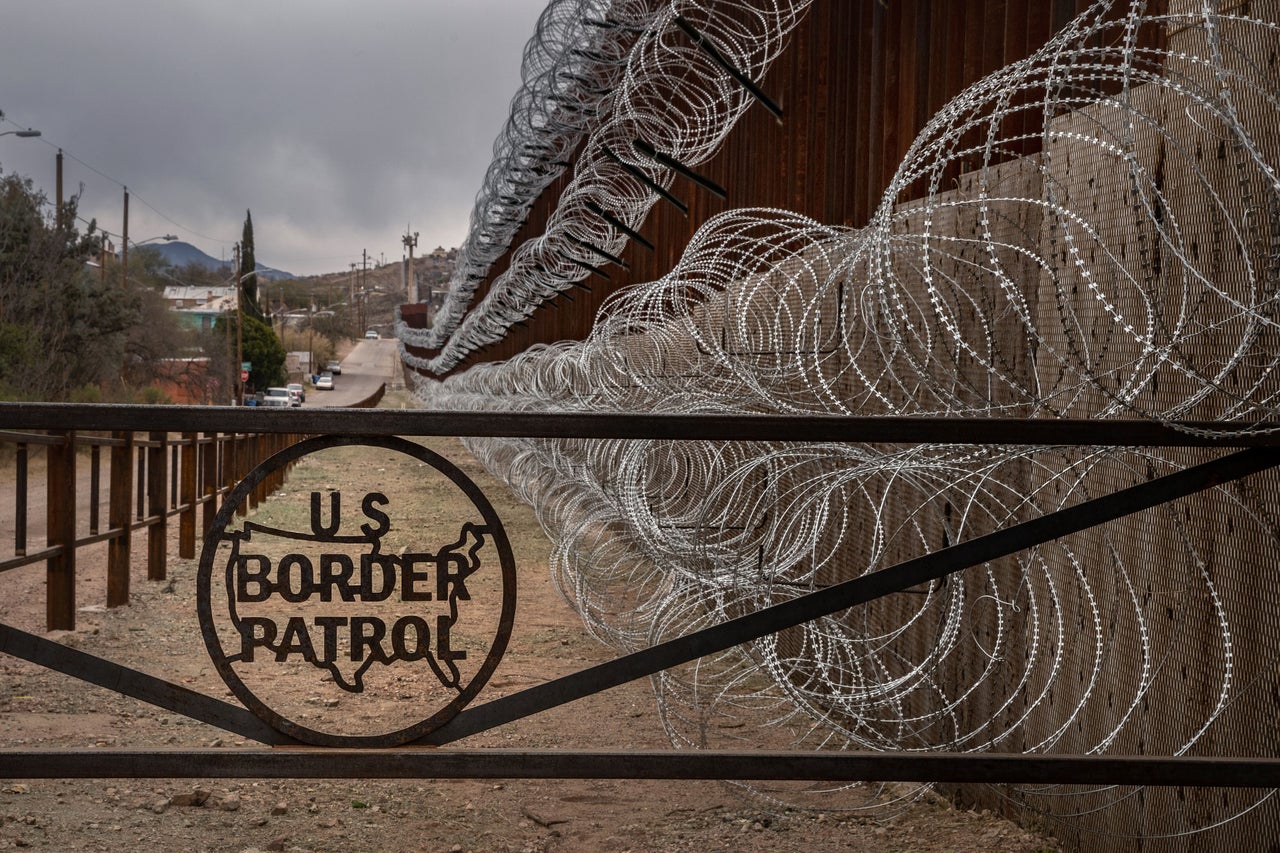
In June, I drove with Mendivil Perez’s family more than an hour south from Tucson, past Elephant Head, a large rock formation that resembles the grizzled head of the animal. We were meeting Mendivil Perez on the Mexican side of the DeConcini crossing, within sight of the place he was shot months before. When we got out of the car in Nogales, Arizona, to get ready to cross on foot, his sister and his mother, Nora, set up a black wheelchair for him on the sidewalk.
Mendivil Perez’s family is small and close-knit. Nora, who had the sort of face that could be wholly consumed by a smile or a frown, was born in Tucson, Arizona, and grew up in Magdalena de Kino, Mexico. She later returned to the United States and now works as a custodian in Tucson.
Mendivil Perez had woken up early that morning to catch a bus from Magdalena, where he was visiting his pregnant girlfriend, whom he has since married. His family had been planning a wedding for them before the shooting, but because of it, his sister told me, “we couldn’t make it a nice little wedding.” They got married through court instead.
Mendivil Perez’s sister Eleonora hoped they might still have an opportunity to make up the celebration. “Memories mean a lot,” she said. “I would want my brother to at least experience something nice.”
On the Mexican side of the border, when Mendivil Perez stepped out of the taxi he took from the bus station, he moved in the delicate manner of a much older man. He could move a short distance using a walker but relied on a wheelchair for longer distances. He was in rehabilitation, working to walk again and living with his mother in her mobile home. His family described him as struggling to keep his balance and forgetting conversations as he recovered from his brain injury.
When Mendivil Perez first found out he and his partner were having a girl, his sister said, he repeated himself: “Oh, did I tell you guys, I’m having a girl?” Yes, she said. “You already told us this, brother.”
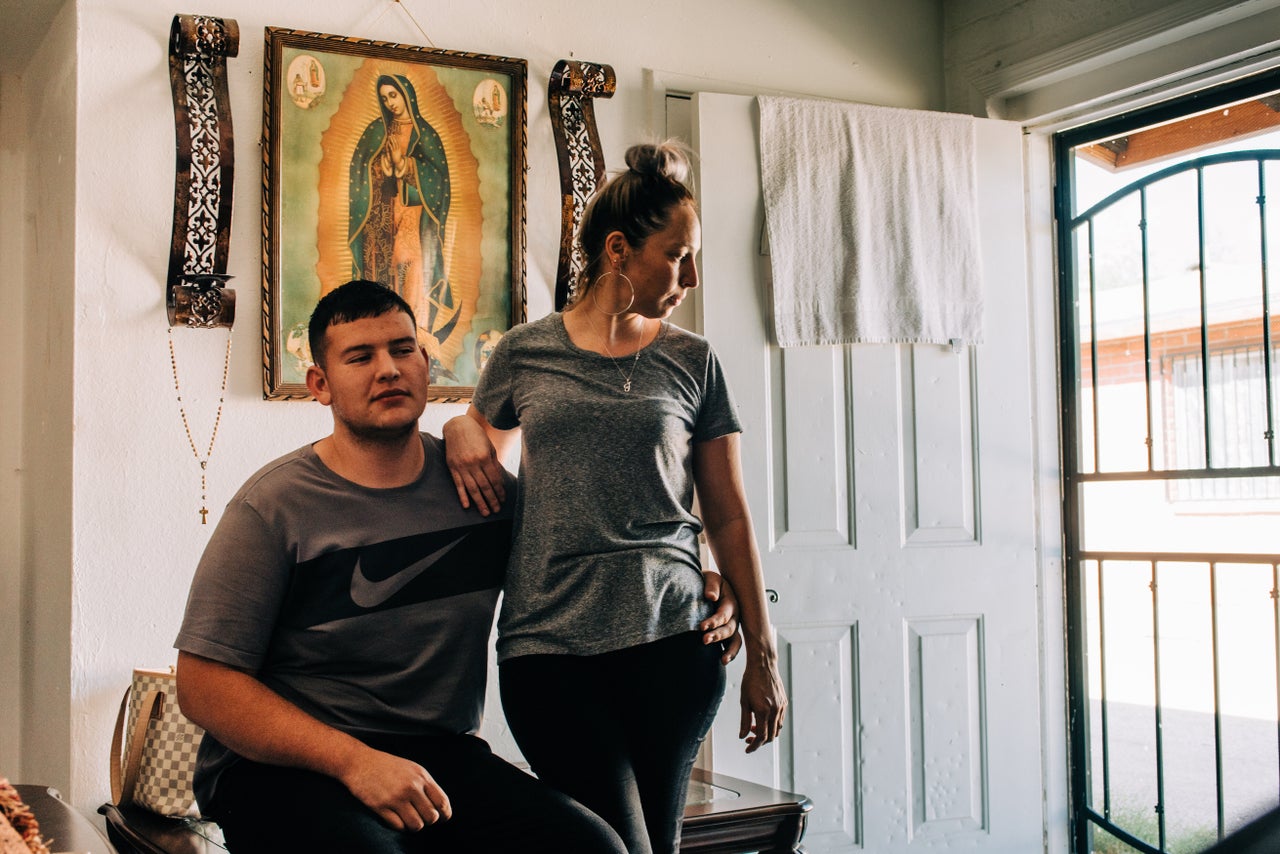
Mendivil Perez’s medical bills are high; an incomplete bill HuffPost viewed that included the helicopter services to transfer him to the hospital in Arizona totaled over $117,000. His family said they were getting benefits through Arizona’s Medicaid agency. Previously, Mendivil Perez held down various part-time jobs, including landscaping. But now, “I have to be dependent on somebody, like my sister or my mother, to get from point A to point B,” he told me, his voice so soft I had to crane closer to make out the words. “I just want to be independent,” he added.
Mendivil Perez said he was focused on his baby, who’s due in August. “As long as I can get myself to walk, I’m looking forward to getting a job,” he said. “That’s another thing that’s getting complicated, because the baby needs stuff and I can’t be like, ‘Oh, I’m going to go to work.’”
The family is planning to file a claim and proceed with a lawsuit under the Federal Tort Claims Act, said Risner, Mendivil Perez’s attorney. They had not yet received any of the reports or information they requested from CBP, he noted. A CBP official and the officer’s attorney declined to comment on the planned lawsuit.
As Eleonora pushed her brother’s wheelchair past the packed pedestrian side of the port of entry toward the United States, the mood was a bit anxious. She had told me earlier that her brother couldn’t really have anyone behind him anymore. “He thinks that everybody has a gun. He thinks everybody wants to shoot at him,” she said.
I remembered how she emphasized that Mendivil Perez was “a really good kid,” and “not a bad, terrible kid.” But ultimately, whether Mendivil Perez was a “good” or “bad” kid is irrelevant to the question of why the officer shot him. The investigation will instead answer the legal question of whether the officer felt his or others’ safety was sufficiently jeopardized to use a form of force that very likely could have ended the 21-year-old’s life.
And there’s a larger question, too: the question of not just what the officer was allowed to do, but what he should have done — whether he needed to fire at all.
A CBP official emphasized that generally, the review process for use-of-force incidents involves circling back to training, tactics and procedures so CBP can learn from these cases and “become better as an agency.”
But CBP is “used to operating with impunity” and “they’re never going to admit a mistake,” argued Richard Boren, a volunteer with the Border Patrol Victims Network, which advocates on behalf of families. “To me, there’s really no question that they nearly murdered an innocent person.”
